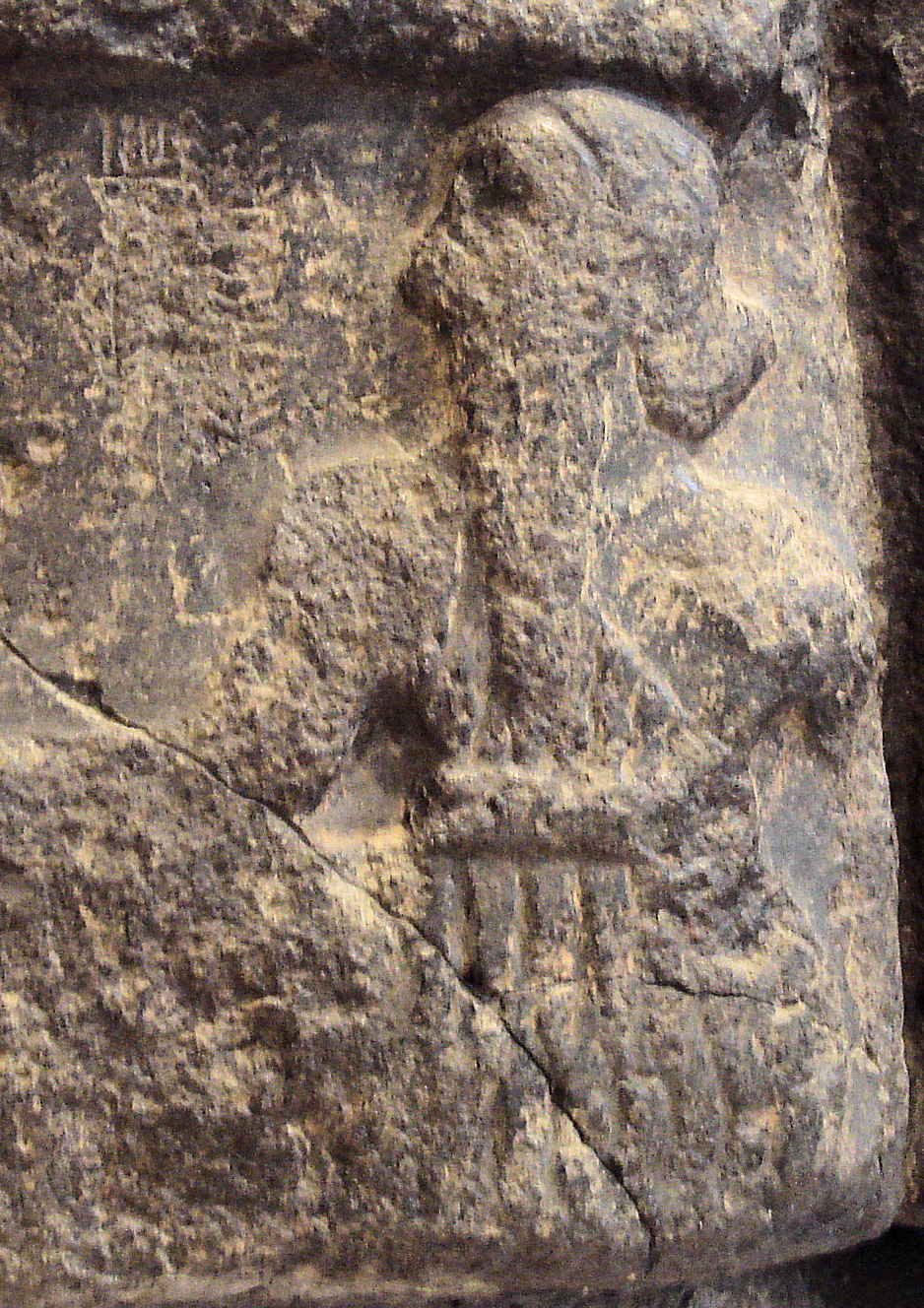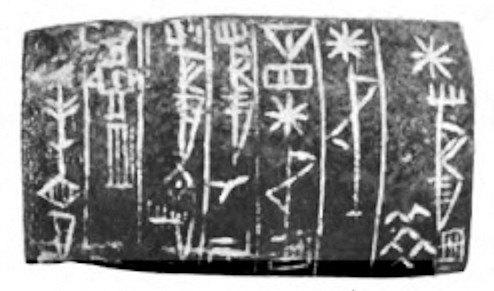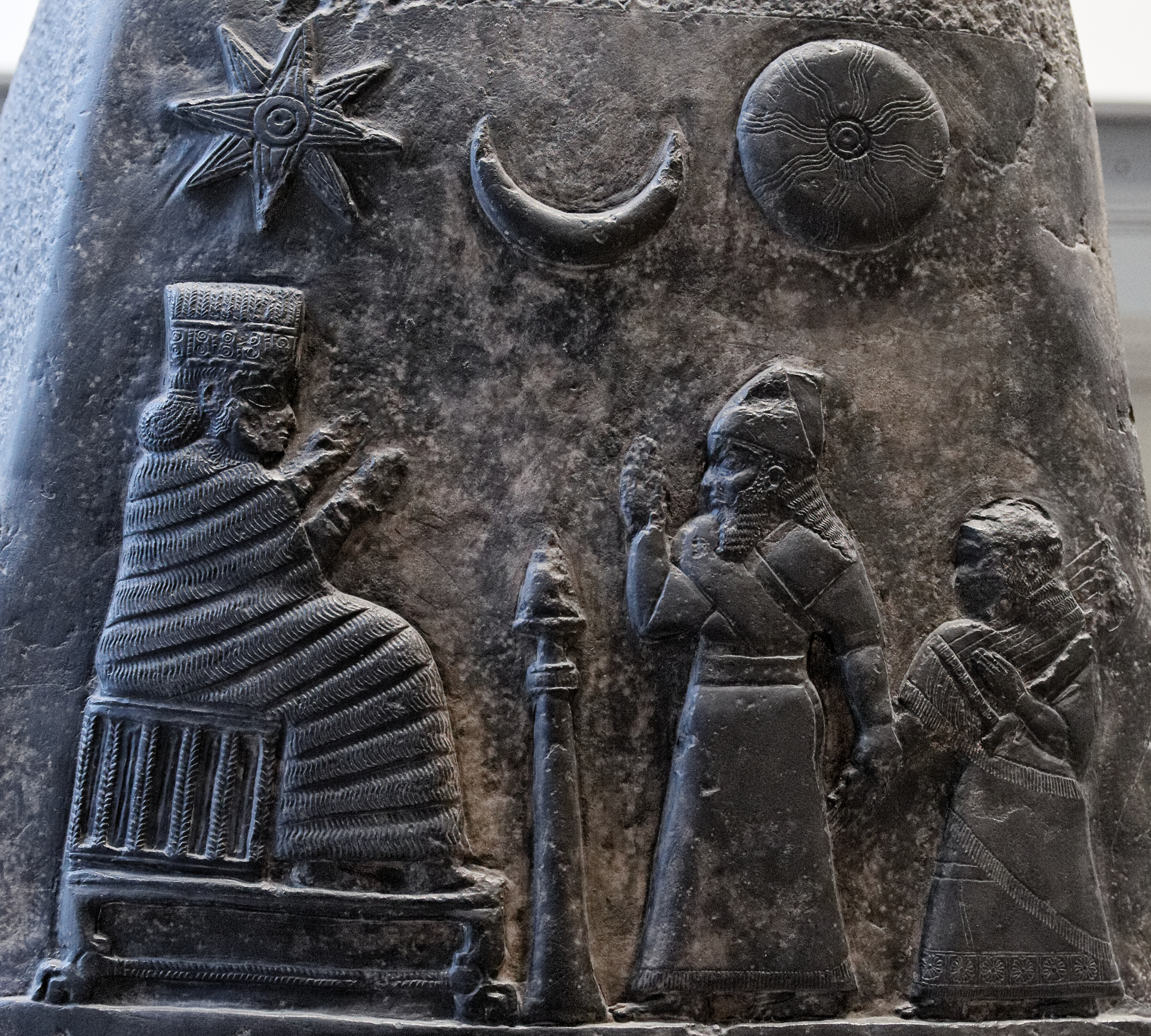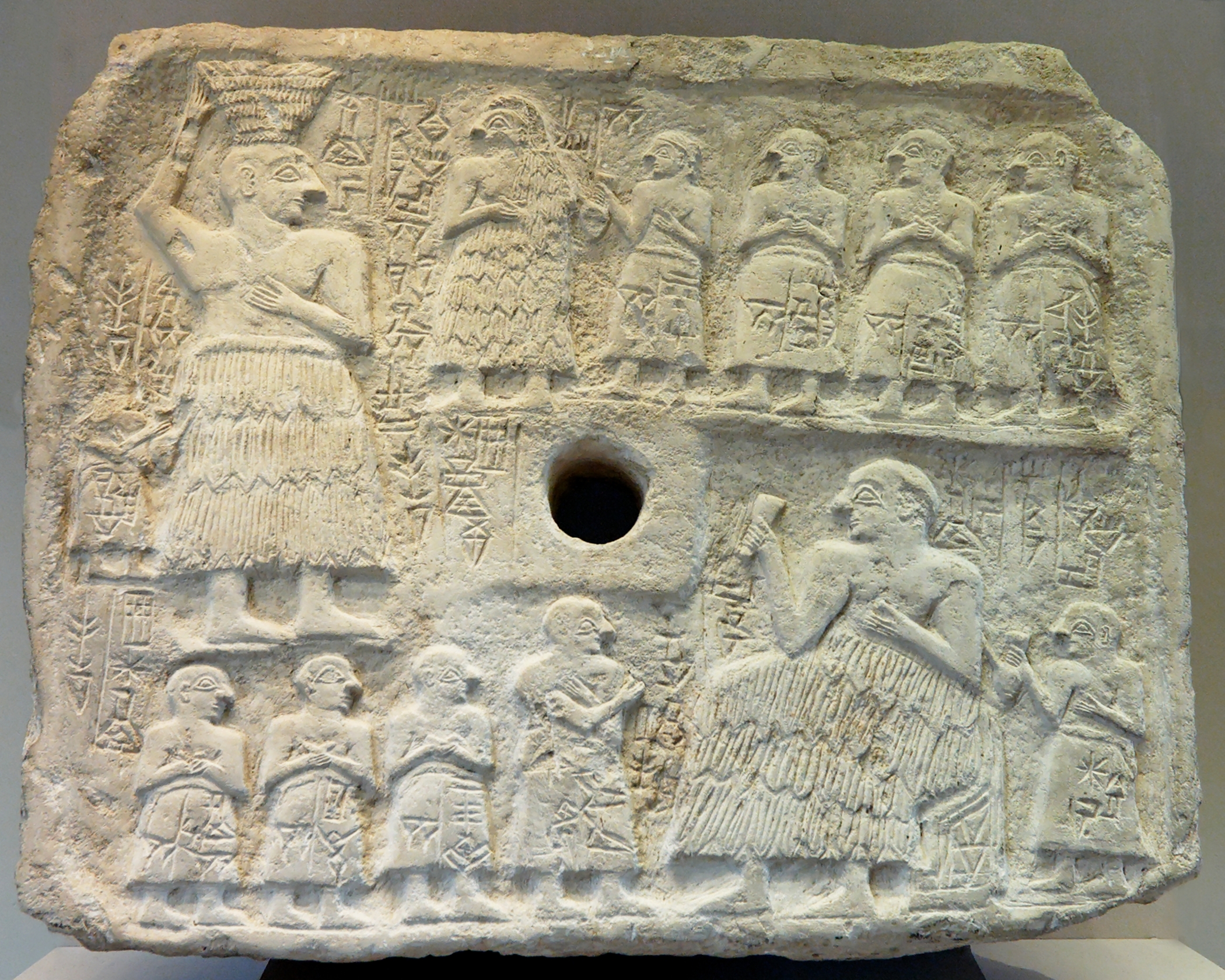|
Enheduanna
Enheduanna ( , also transliteration, transliterated as , , or variants; ) was the (high) priestess of the moon god Sin (mythology), Nanna (Sīn) in the Sumerian city-state of Ur in the reign of her father, Sargon of Akkad ( BCE). She was likely appointed by her father as the leader of the religious group at Ur to cement ties between the Akkadian religion of her father and the native Sumerian religion. Enheduanna has been celebrated as the earliest known named author in world history. A number of works in Sumerian literature, such as the ''Exaltation of Inanna'' feature her as the first-person narrator, and other works, such as the ''Sumerian Temple Hymns'' may identify her as their author. However, there is considerable debate among modern Assyriologists based on linguistic and archaeological grounds as to whether or not she actually wrote or composed any of the rediscovered works that have been attributed to her. Additionally, the only manuscripts of the works attributed to her ... [...More Info...] [...Related Items...] OR: [Wikipedia] [Google] [Baidu] |
Akkadian Empire
The Akkadian Empire () was the first known empire, succeeding the long-lived city-states of Sumer. Centered on the city of Akkad (city), Akkad ( or ) and its surrounding region, the empire united Akkadian language, Akkadian and Sumerian language, Sumerian speakers under one rule and exercised significant influence across Mesopotamia, the Levant, and Anatolia, sending military expeditions as far south as Dilmun and Magan (civilization), Magan (modern United Arab Emirates, Saudi Arabia, Bahrain, Qatar and Oman) in the Arabian Peninsula.Mish, Frederick C., Editor in Chief. "Akkad" ''iarchive:webstersninthne000merr, Webster's Ninth New Collegiate Dictionary''. ninth ed. Springfield, MA: Merriam-Webster 1985. ). The Akkadian Empire reached its political peak between the 24th and 22nd centuries BC, following the conquests by its founder Sargon of Akkad. Under Sargon and his successors, the Akkadian language was briefly imposed on neighboring conquered states such as Elam and Guti ... [...More Info...] [...Related Items...] OR: [Wikipedia] [Google] [Baidu] |
Inanna
Inanna is the List of Mesopotamian deities, ancient Mesopotamian goddess of war, love, and fertility. She is also associated with political power, divine law, sensuality, and procreation. Originally worshipped in Sumer, she was known by the Akkadian Empire, Akkadians, Babylonian religion, Babylonians, and Assyrians as Ishtar. Her primary title is Queen of Heaven (antiquity), "the Queen of Heaven". She was the patron goddess of the Eanna temple at the city of Uruk, her early main religious center. In archaic Uruk, she was worshipped in three forms: morning Inanna (Inana-UD/hud), evening Inanna (Inanna sig), and princely Inanna (Inanna NUN), the former two reflecting the phases of her associated planet Venus. Her most prominent symbols include the Lion of Babylon, lion and the Star of Ishtar, eight-pointed star. Her husband is the god Dumuzid (later known as Tammuz), and her (attendant) is the goddess Ninshubur, later conflated with the male deities Ilabrat and Papsukkal. Inanna ... [...More Info...] [...Related Items...] OR: [Wikipedia] [Google] [Baidu] |
Sin (mythology)
Sin () or Suen (, ) also known as Nanna ( ) is the Mesopotamian god representing the moon. While these two names originate in two different languages, respectively Akkadian language, Akkadian and Sumerian language, Sumerian, they were already used interchangeably to refer to one deity in the Early Dynastic Period (Mesopotamia), Early Dynastic period. They were sometimes combined into the double name Nanna-Suen. A third well attested name is Dilimbabbar (). Additionally, the name of the moon god could be represented by logograms reflecting his lunar character, such as d30 (), referring to days in the lunar month or dU4.SAKAR (), derived from a term referring to the crescent. In addition to his astral role, Sin was also closely associated with cattle herding. Furthermore, there is some evidence that he could serve as a judge of the dead in the Ancient Mesopotamian underworld, underworld. A distinct tradition in which he was regarded either as a god of equal status as the usual hea ... [...More Info...] [...Related Items...] OR: [Wikipedia] [Google] [Baidu] |
Classical Rhetoric
Rhetoric is the art of persuasion. It is one of the three ancient arts of discourse (trivium) along with grammar and logic/dialectic. As an academic discipline within the humanities, rhetoric aims to study the techniques that speakers or writers use to inform, persuade, and motivate their audiences. Rhetoric also provides heuristics for understanding, discovering, and developing arguments for particular situations. Aristotle defined rhetoric as "the faculty of observing in any given case the available means of persuasion", and since mastery of the art was necessary for victory in a case at law, for passage of proposals in the assembly, or for fame as a speaker in civic ceremonies, he called it "a combination of the science of logic and of the ethical branch of politics". Aristotle also identified three persuasive audience appeals: logos, pathos, and ethos. The five canons of rhetoric, or phases of developing a persuasive speech, were first codified in classical Rome: invention, ... [...More Info...] [...Related Items...] OR: [Wikipedia] [Google] [Baidu] |
Sargon Of Akkad
Sargon of Akkad (; ; died 2279 BC), also known as Sargon the Great, was the first ruler of the Akkadian Empire, known for his conquests of the Sumerian city-states in the 24th to 23rd centuries BC.The date of the reign of Sargon is highly uncertain, depending entirely on the (conflicting) regnal years given in the various copies of the Sumerian King List, specifically the uncertain duration of the Gutian dynasty. The added regnal years of the Sargonic and the Gutian dynasties have to be subtracted from the accession of Ur-Nammu of the Third Dynasty of Ur, which is variously dated to either 2047 BC ( Short Chronology) or 2112 BC ( Middle Chronology). An accession date of Sargon of 2334 BC assumes: (1) a Sargonic dynasty of 180 years (fall of Akkad 2154 BC), (2) a Gutian interregnum of 42 years and (3) the Middle Chronology accession year of Ur-Nammu (2112 BC). He is sometimes identified as the first person in recorded history to rule over an empire. He was the founder of ... [...More Info...] [...Related Items...] OR: [Wikipedia] [Google] [Baidu] |
Ningal
Ningal ( Sumerian: "Great Queen"; Akkadian Nikkal) was a Mesopotamian goddess regarded as the wife of the moon god, Nanna/Sin. She was particularly closely associated with his main cult centers, Ur and Harran, but they were also worshiped together in other cities of Mesopotamia. She was particularly venerated by the Third Dynasty of Ur and later by kings of Larsa. Character and iconography Ningal's name has Sumerian origin and can be translated as "Great Queen". While she was a major deity in the Mesopotamian pantheon and the worship of her is attested from all periods of history of Mesopotamia, her character was largely "passive and supportive" according to Joan Goodnick Westenholz. She was the tutelary deity of Ur. She shared it with her husband Nanna (Akkadian Sin). She was referred to as the "lady" ( NIN; Early Dynastic sources) or "mother" (AMA; Ur III sources) of Ur. She and the city could be compared to a mother and her child in literary texts. She was portraye ... [...More Info...] [...Related Items...] OR: [Wikipedia] [Google] [Baidu] |
EN (cuneiform)
En (Borger 2003 nr. 164 ; Unicode, U+12097 𒂗, see also Ensí) is the Sumer, Sumerian cuneiform for 'lord/lady' or 'priest[ess]'. Originally, it seems to have been used to designate a high priest or priestess of a Sumerian city-state's patron-deity – a position that entailed political power as well. It may also have been the original title of the ruler of Uruk. See Lugal#Lugal, ensi and en, ''Lugal, ensi and en'' for more details. Deities including En as part of their name include dingir, DEnlil, DEnki, DEngurun, and DSin (mythology), Enzu. Enheduanna, Akkadian language, Akkadian 2285 BC – 2250 BC was the first known holder of the title En, here meaning 'Priestess'. Archaic forms The corresponding Emesal, Emesal dialect word was UMUN, which may preserve an archaic form of the word. Earlier Emeg̃ir (the standard dialect of Sumerian) forms can be postulated as *''ewen'' or *''emen'', eventually dropping the middle consonant and becoming the familiar EN. Amarna letters: ' ... [...More Info...] [...Related Items...] OR: [Wikipedia] [Google] [Baidu] |
Naram-Sin Of Akkad
Naram-Sin, also transcribed Narām-Sîn or Naram-Suen (: '' DNa-ra-am D Sîn'', meaning "Beloved of the Moon God Sîn", the "𒀭" a determinative marking the name of a god; died 2218 BC), was a ruler of the Akkadian Empire, who reigned –2218 BC ( middle chronology), and was the third successor and grandson of King Sargon of Akkad. Under Naram-Sin the empire reached its maximum extent. He was the first Mesopotamian king known to have claimed divinity for himself, taking the title "God of Akkad", and the first to claim the title " King of the Four Quarters". His military strength was strong as he crushed revolts and expanded the empire to places like Turkey and Iran. He became the patron city god of Akkade as Enlil was in Nippur. His enduring fame resulted in later rulers, Naram-Sin of Eshnunna and Naram-Sin of Assyria as well as Naram-Sin of Uruk, assuming the name. Biography Naram-Sin was a son of Manishtushu. He was thus a nephew of King Rimush and grandson of Sarg ... [...More Info...] [...Related Items...] OR: [Wikipedia] [Google] [Baidu] |
Disk Of Enheduanna (2)
Disc or disk may refer to: * Disk (mathematics), a two dimensional shape, the interior of a circle * Disk storage * Optical disc * Floppy disk Music * Disc (band), an American experimental music band * ''Disk'' (album), a 1995 EP by Moby Other uses * Disc harrow, a farm implement * Discus throw or disc throw, a track and field event involving a heavy disc * Intervertebral disc, a cartilage between vertebrae * Disk (functional analysis), a subset of a vector space * ''Disc'' (magazine), a British music magazine * Disk, a part of a flower * Disc number, numbers assigned to Inuit by the Government of Canada * Galactic disc, a disc-shaped group of stars Abbreviations * Death-inducing signaling complex * DISC assessment, a group of psychometric tests * Defence Intelligence and Security Centre or Joint Intelligence Training Group, the headquarters of the Defence College of Intelligence and the British Army Intelligence Corps * Delaware Independent School Conference, a hi ... [...More Info...] [...Related Items...] OR: [Wikipedia] [Google] [Baidu] |
Lagash
Lagash (; cuneiform: LAGAŠKI; Sumerian language, Sumerian: ''Lagaš'') was an ancient city-state located northwest of the junction of the Euphrates and Tigris rivers and east of Uruk, about east of the modern town of Al-Shatrah, Iraq. Lagash (modern Al-Hiba in Dhi Qar Governorate) was one of the oldest cities of the Ancient Near East. The ancient site of Nina (Tell Zurghul) is around away and marks the southern limit of the state. Nearby Girsu (modern Telloh), about northwest of Lagash, was the religious center of the Lagash state. The Lagash state's main temple was the E-ninnu at Girsu, dedicated to the god Ningirsu. The Lagash state incorporated the ancient cities of Lagash, Girsu, Nina. History Though some Uruk period pottery shards were found in a surface survey, significant occupation at the site of Lagash began early in the 3rd Millennium BC, in the Early Dynastic Period (Mesopotamia), Early Dynastic I period (c. 2900–2600 BC), surface surveys and excavations show tha ... [...More Info...] [...Related Items...] OR: [Wikipedia] [Google] [Baidu] |
Sir Leonard Woolley
Sir Charles Leonard Woolley (17 April 1880 – 20 February 1960) was a British archaeologist best known for his excavations at Ur in Mesopotamia. He is recognized as one of the first "modern" archaeologists who excavated in a methodical way, keeping careful records, and using them to reconstruct ancient life and history. Woolley was knighted in 1935 for his contributions to the discipline of archaeology. He was married to the British archaeologist Katharine Woolley. Early life Woolley was the son of a clergyman, and was brother to Geoffrey Harold Woolley, VC, and George Cathcart Woolley. He was born at 13 Southwold Road, Upper Clapton, in the modern London Borough of Hackney and educated at St John's School, Leatherhead and New College, Oxford. He was interested in excavations from a young age. Career In 1905, Woolley became assistant of the Ashmolean Museum, Oxford. Volunteered by Arthur Evans to run the excavations on the Roman site at Corbridge (near Hadrian's Wall) ... [...More Info...] [...Related Items...] OR: [Wikipedia] [Google] [Baidu] |
Joan Goodnick Westenholz
Joan Goodnick Westenholz (1 July 1943 – February 2013) was an Assyriologist and the chief curator at the Bible Lands Museum in Jerusalem. She held positions related to academic research at the Oriental Institute (University of Chicago), Harvard University, Ruhr University Bochum (Germany), New York University, Princeton University, and the W. F. Albright Institute of Archaeological Research at Jerusalem. She was one of the first people to research gender studies in relation to the Ancient Near East and she co-founded and edited the inter-disciplinary NIN – Journal of Gender Studies in Antiquity. Early life and education Westenholz was born in 1943 in Philadelphia and attended the University of Pennsylvania, where she graduated at the age of 21 with a degree in anthropology. She completed her PhD in Near Eastern Languages and Literatures from the University of Chicago The University of Chicago (UChicago, Chicago, or UChi) is a Private university, private research uni ... [...More Info...] [...Related Items...] OR: [Wikipedia] [Google] [Baidu] |






